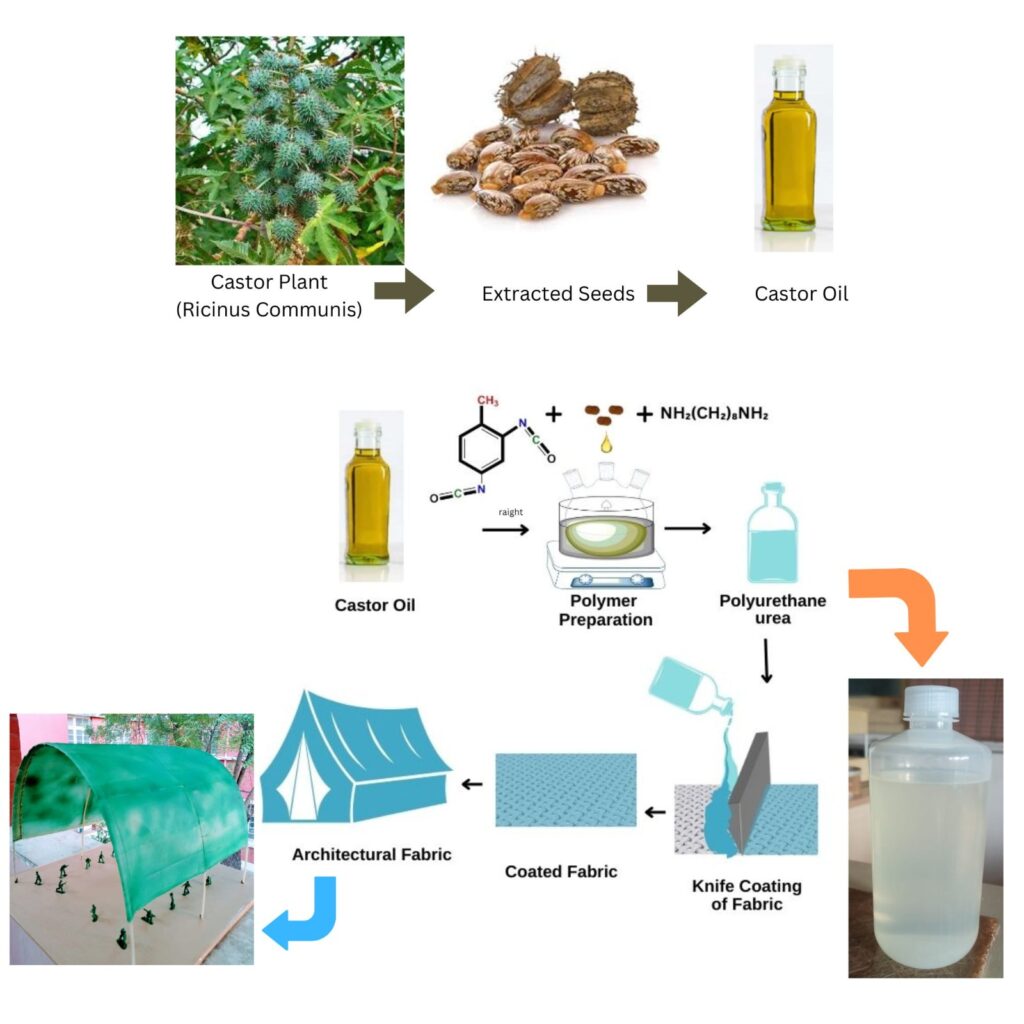Problem Addressed
The traditional reliance on petrochemical-based polymers for architectural fabrics poses significant environmental challenges. By eliminating the reliance on petrochemical-based polymers, this eco-friendly innovation not only contributes to environmental preservation but also caters to the specific requirements of the Indian army, sports authorities, exhibitors, and economically disadvantaged populations.
Technology
The innovation involves the careful synthesis of a castor oil-based polyurethane urea polymer. Castor oil, a renewable resource, serves as the primary building block for the polymer, ensuring a sustainable and environmentally friendly foundation. This novel polymer is then expertly coated onto high-tenacity fabrics, including polyester, nylon, fiberglass, and kevlar, creating a robust and durable composite material. Other chemicals for polymer synthesis include the isocyanates, chain extenders, catalysts and solvents.

Societal Impact
By creating affordable and sustainable options for shelters, the innovation addresses the needs of economically disadvantaged populataddresses ions, providing a dignified living environment. The adoption of biomass-based architectural fabrics contributes significantly to environmental preservation by reducing the carbon footprint associated with petrochemical-based alternatives.
Current status
Have developed three PUU-coated fabric variants: one with polyester for general shelters, one with fibreglass for permanent structures, and one with Kevlar for cut resistance. All variants are fire-retardant and UV-resistant, ensuring high durability. The next steps involve fine-tuning these products and preparing for scaled production to meet diverse market needs.



